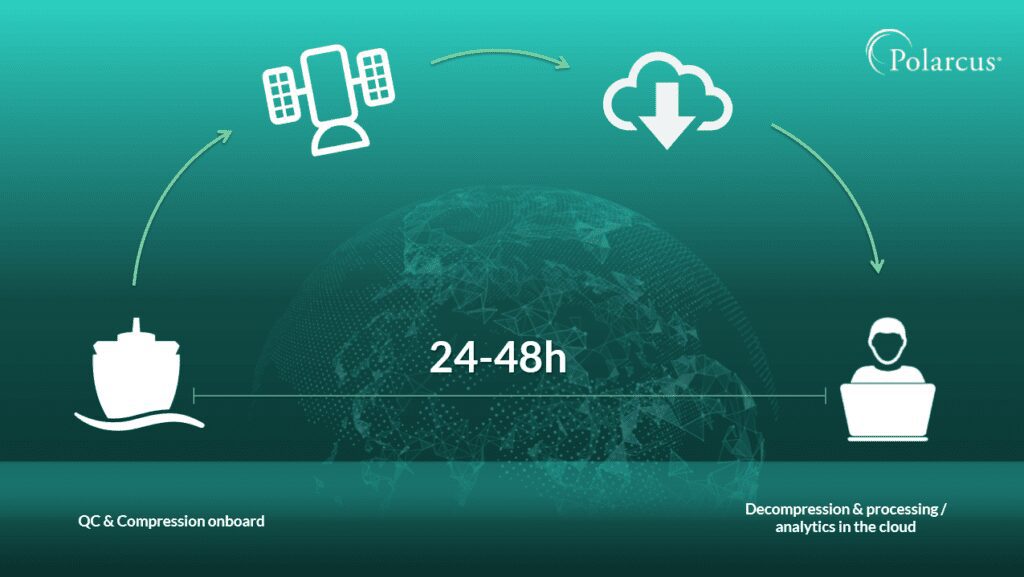
Bluware Enables Seismic Data Streaming from Vessel Directly to the Cloud
Polarcus achieved a transmission efficiency of 95 percent over the 25 mbps allocated bandwidth with an average transmission rate of 200 gigabytes per day. This technology allowed Polarcus to stream all seismic data to the cloud within 24 to 48 hours of acquisition.
In Q4 2018, Polarcus successfully streamed more than 1.5 TB of data live over satellite link, from vessel to cloud. The test comprised of two data sequences acquired with Polarcus XArray triple source (10 x 150 m x 10,500 m streamers configuration). The line length was around 150 km with a shot point interval of 12.5 m. The test lasted for two days and more than 800 GB of raw data was acquired each day. The data quality was validated onboard and merged with navigation into a SEG-Y dataset.
Using Bluware’s TELEPORT™ solution and underlying VDS seismic format, combined with adaptive streaming, the data was transferred at 1/4 of the original size. This reduced the volume from 1.5 TB to approximately 400 GB and transmitted to the cloud at an effective transfer rate of 22.5 MBps in two days.
“We were able to achieve a transmission efficiency of 95 percent over the 25 MBps allocated bandwidth with an average transmission rate of 200 GB per day. This technology allows us to stream all seismic data to the cloud within 24 to 48 hours of acquisition,” says Phil Fontana, Chief Geophysicist at Polarcus.
The transferred data was then processed and compared to the results with the original data. There was no loss in data quality recorded, indicating this solution can be applied to the acquisition/processing workflow effectively. Further testing is in progress to validate 10 to 15 times compression, opening the applicability to larger data sets. The next step is the transmission of continuous data streaming from the vessel during the whole acquisition process.
“Our unique IP enables significant change in the industry. Polarcus’ results demonstrate that the acquisition and processing workflow can be improved to the point that a hydrophone could be seen in the future like any other IOT sensor. Also, a combination of edge, cloud analytics, and machine learning can be applied directly to the signal,” says Dan Piette, CEO of Bluware.
